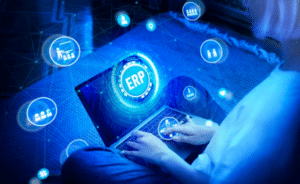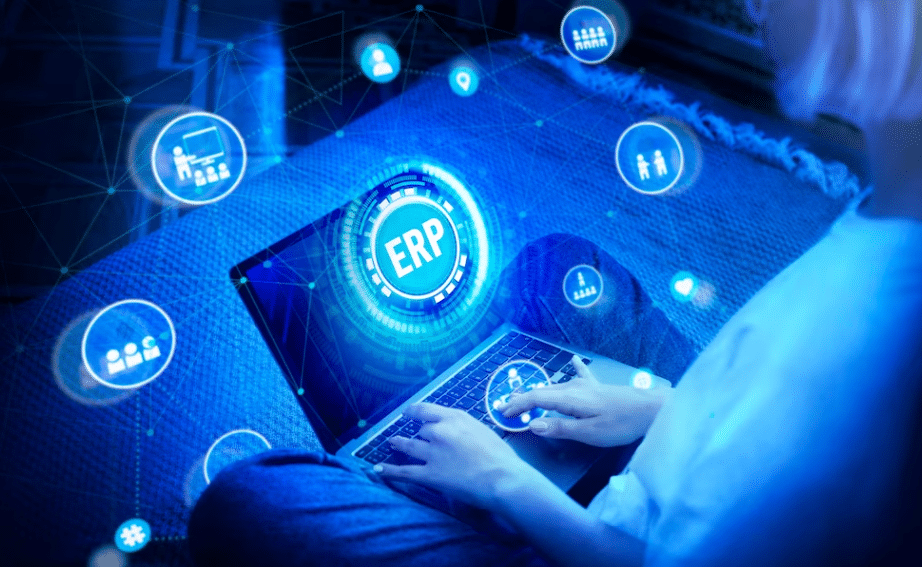Introduction
erp.balitteknologikaret.co.id | SaaS ERP – refers to an ERP (Enterprise Resource Planning) system that is delivered and accessed as a cloud-based service rather than being installed and maintained on-premises. In a SaaS ERP model, the ERP software is hosted on a remote server, maintained and updated by the ERP provider, and accessed by users over the internet.
“Enterprise Resource Planning” (ERP) is a comprehensive software system that helps businesses manage and streamline their core processes and data across various departments. ERP systems are designed to enhance efficiency, productivity, and decision-making within an organization.
In summary, SAAS ERP combines the benefits of cloud computing and ERP functionality, offering businesses a scalable, cost-effective, and flexible solution for managing their operations and resources.
In the ever-evolving landscape of enterprise technology, Software as a Service (SaaS) Enterprise Resource Planning (ERP) systems have emerged as a transformative force. These cloud-based solutions offer organizations a dynamic and scalable approach to managing their resources, processes, and data. In this comprehensive guide, we delve deep into the world of SaaS ERP, exploring its evolution, key components, benefits, and future trends that are shaping the way businesses operate in the digital age.

Chapter 1: Understanding SaaS ERP
Section 1.1: The Essence of SaaS ERP
In this section, we establish a fundamental understanding of SaaS ERP. We explain the core concept of SaaS ERP as a cloud-based solution that integrates various business functions into a unified system. Discover how SaaS ERP empowers organizations to access critical data and functionalities from anywhere with an internet connection.
Section 1.2: The Evolution of SaaS ERP
Explore the historical journey of SaaS ERP systems, from their early beginnings to the modern, sophisticated solutions we have today. Understand how technological advancements and the shift to cloud computing have shaped the evolution of SaaS ERP.
Section 1.3: Benefits of SaaS ERP
Discover the tangible benefits of adopting a SaaS ERP system, including cost-effectiveness, scalability, accessibility, real-time data access, enhanced collaboration, and reduced IT complexity. Learn how these advantages drive efficiency and competitiveness.
Chapter 2: Key Components of SaaS ERP
Section 2.1: Cloud-Based Accessibility
Subsection 2.1.1: Anytime, Anywhere Access
Dive into the advantages of cloud-based accessibility in SaaS ERP. Understand how users can access critical business data and functionalities from anywhere with an internet connection, fostering flexibility and remote work capabilities.
Subsection 2.1.2: Scalability
Explore the scalability of SaaS ERP systems, which allows organizations to adjust their resources as needed. Whether you’re a small startup or a large enterprise, SaaS ERP adapts to your business’s growth without major infrastructure investments.
Section 2.2: Integrated Modules
Subsection 2.2.1: Financial Management
Learn about the financial management modules within SaaS ERP, covering core functions such as general ledger, accounts payable, accounts receivable, and budgeting. Discover how these modules provide real-time insights into an organization’s financial health.
Subsection 2.2.2: Supply Chain Management
Delve into the supply chain management capabilities of SaaS ERP solutions, providing tools for inventory management, order processing, procurement, and demand forecasting. Learn how these features optimize supply chain operations.
Subsection 2.2.3: Human Resources and Payroll
Explore the human resources and payroll management modules within SaaS ERP, covering employee records, payroll processing, benefits administration, and talent management. Understand how these modules ensure compliance with labor laws and support efficient workforce management.
Subsection 2.2.4: Customer Relationship Management (CRM)
Discover how CRM modules within SaaS ERP centralize customer data, facilitating improved customer service, sales tracking, and marketing automation. Learn how businesses can deliver personalized customer experiences and enhance loyalty.
Section 2.3: Business Intelligence and Analytics
Subsection 2.3.1: Real-Time Data Analytics
Uncover the real-time data analytics tools in SaaS ERP solutions, empowering users to create custom reports, dashboards, and key performance indicators (KPIs). Understand how data-driven decision-making becomes a reality.
Subsection 2.3.2: Predictive Analytics
Explore the predictive analytics capabilities of SaaS ERP systems, which enable organizations to anticipate trends, identify opportunities, and make proactive decisions based on data insights.
Chapter 3: Benefits of Using SaaS ERP
Section 3.1: Cost-Effective Deployment
Learn how SaaS ERP solutions eliminate the need for large upfront capital investments in hardware and software licenses. Businesses can subscribe to cloud-based ERP services, paying for only the resources they use.
Section 3.2: Real-Time Data Access
Discover how organizations gain real-time access to critical business data with SaaS ERP, enabling informed decision-making, timely responses to market changes, and improved operational efficiency.
Section 3.3: Enhanced Collaboration
Explore how cloud-based SaaS ERP fosters collaboration among teams, departments, and external partners. Users can collaborate on projects, share data, and access ERP functionality from various locations, enhancing productivity.
Section 3.4: Scalability
Understand how SaaS ERP solutions scale effortlessly to accommodate business growth. Organizations can add or remove users, features, and resources as needed without major disruptions or expenses.
Section 3.5: Security and Data Backup
Learn about the robust security measures and regular data backups implemented by SaaS ERP providers. Discover how sensitive data is protected and data recovery is ensured in case of emergencies.
Section 3.6: Disaster Recovery
Explore the disaster recovery and business continuity features within SaaS ERP solutions. Understand how these features minimize downtime in the event of system failures or natural disasters.
Section 3.7: Automatic Updates
Discover how SaaS ERP providers handle system updates and maintenance, ensuring that users always have access to the latest features and security patches.
Chapter 4: Implementation Considerations
Section 4.1: Vendor Selection
Understand the importance of selecting the right SaaS ERP vendor for a successful implementation. Consider factors such as vendor reputation, data security measures, service-level agreements (SLAs), and solution scalability.
Section 4.2: Data Migration
Explore best practices for efficient data migration when transitioning to a SaaS ERP solution. Ensure that data is accurately transferred from existing systems and that historical records are preserved.
Section 4.3: User Training
Learn about the significance of proper user training during the implementation of SaaS ERP solutions. Investing in training programs helps users leverage the system’s full potential.
Section 4.4: Integration
Discover the importance of seamless integration with other systems, such as CRM, e-commerce platforms, and third-party applications. Understand how integration facilitates data flow and end-to-end business processes.
Chapter 5: Future Trends in SaaS ERP
Section 5.1: Artificial Intelligence (AI) and Machine Learning (ML)
Explore how AI and ML technologies will integrate into SaaS ERP solutions, offering predictive analytics, automation, and advanced data insights for smarter decision-making.
Section 5.2: Enhanced Mobility
Learn about the growing trend of enhanced mobility within SaaS ERP solutions. Discover how users will access critical data and functionalities from mobile devices, supporting remote work and on-the-go operations.
Section 5.3: Internet of Things (IoT) Integration
Understand how the integration of SaaS ERP with IoT devices and data will enable real-time monitoring of assets, equipment, and processes. Discover how this integration enhances decision-making.
Section 5.4: Blockchain Integration
Explore the potential for blockchain technology to enhance security, transparency, and trust in transactions within SaaS ERP systems, particularly in supply chain and financial operations.
Section 5.5: Industry-Specific Solutions
Discover the emerging trend of SaaS ERP vendors developing industry-specific solutions tailored to the unique needs of various sectors, such as manufacturing, healthcare, and retail.
Conclusion
SaaS ERP systems represent a monumental shift in the way businesses manage their resources and operations. Their cloud-based, scalable nature, coupled with an array of benefits, makes them a compelling choice for organizations of all sizes. As we look to the future, SaaS ERP systems will continue to evolve, driven by trends such as AI integration, enhanced mobility, IoT connectivity, and industry-specific customization. By embracing these advancements, businesses can harness the full potential of SaaS ERP to thrive in an ever-changing and interconnected business environment.

Leave a Reply